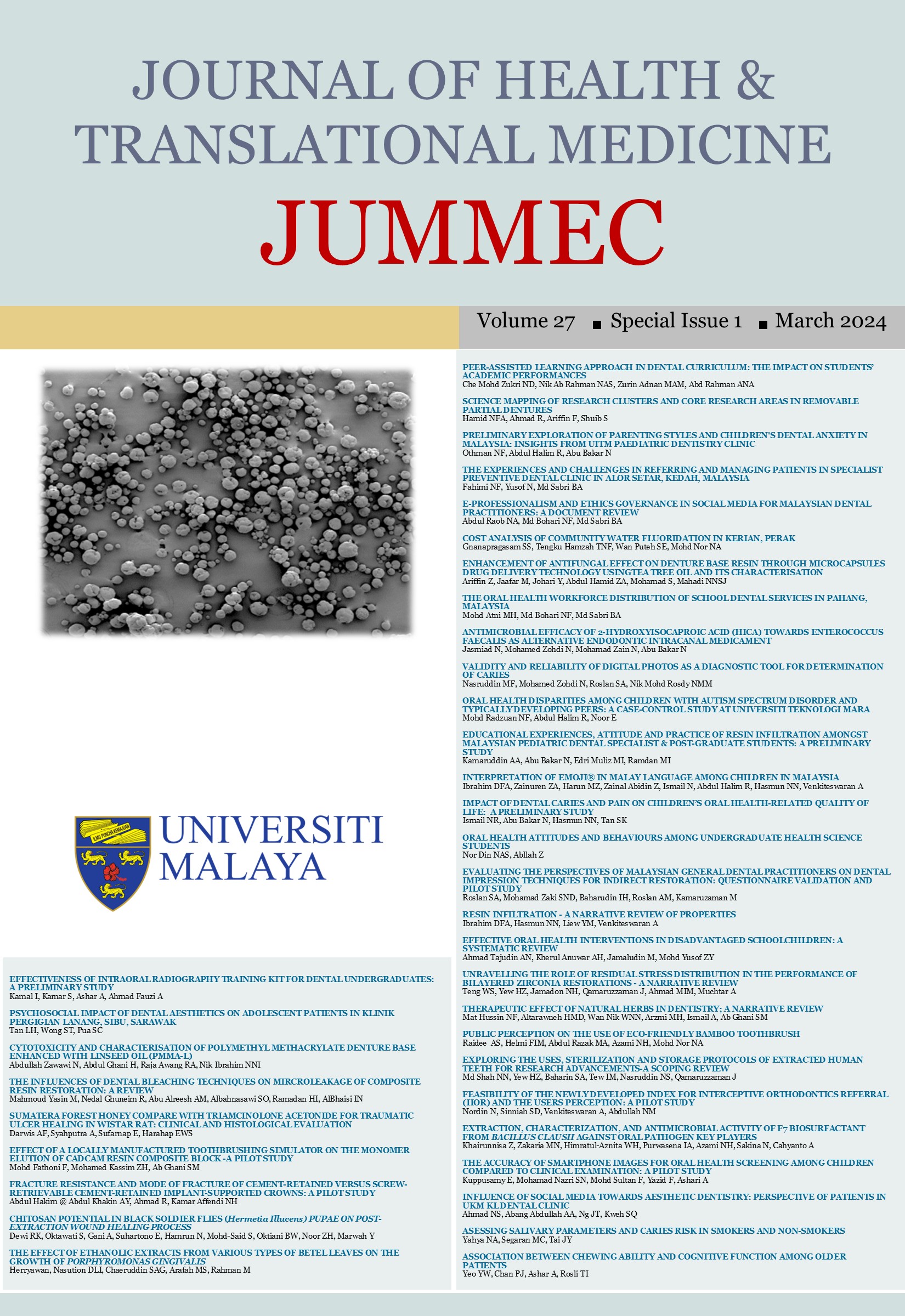THE ORAL HEALTH WORKFORCE DISTRIBUTION OF SCHOOL DENTAL SERVICES IN PAHANG, MALAYSIA
Received 2024-02-19; Accepted 2024-03-26; Published 2024-03-27
DOI:
https://doi.org/10.22452/jummec.sp2024no1.8Abstract
Oral healthcare workforce planning is commonly limited to the calculation of dentist-to-population ratios. However, this approach overlooks several crucial variables, such as the burden of oral health needs. Workload analysis is implemented to gain a comprehensive understanding of the true oral health requirements. This study aims to enhance our comprehension of the workforce imbalance and its effect on the distribution of personnel serving School Dental Services (SDS) in Pahang. To achieve standardised workforce sizing for every school, the operator-to-student ratio, that is, the ratio of a single operator to the entire student body, is utilised. The collected data is then merged and computed into the ArcGIS Pro software for geospatial analysis. Statistical analysis is conducted through the utilisation of SPSS software. In Pahang, 10% (n=72) of schools have a low operator-to-student ratio, with 47 located in Kuantan. There is a significant difference in DMFT mean between rural (0.74; SD=0.60) and urban (0.86; SD=0.58) schools (p=0.02). Kuantan's urban schools have a significant operator burden, with a shortage of operators compared to other districts, amplifying the workforce distribution imbalance. Compared to urban areas, there is a greater ratio of one operator to the total student population in rural areas. However, schools with a higher number of students need more children to be treated per operator. The necessity for a fair workload-based distribution of SDS staff is evident.
Downloads
Downloads
Published
Issue
Section
License
All authors agree that the article, if editorially accepted for publication, shall be licensed under the Creative Commons Attribution License 4.0 to allow others to freely access, copy and use research provided the author is correctly attributed, unless otherwise stated. All articles are available online without charge or other barriers to access. However, anyone wishing to reproduce large quantities of an article (250+) should inform the publisher. Any opinion expressed in the articles are those of the authors and do not reflect that of the University of Malaya, 50603 Kuala Lumpur, Malaysia.


